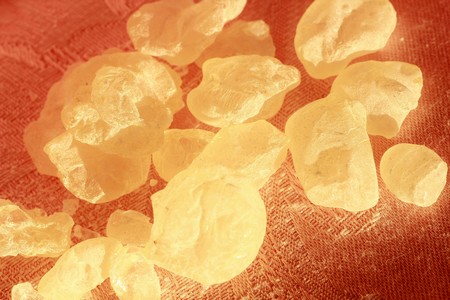The scent of Chios mastic surprises us with its cleanliness and brilliance. It is a resin that has been used extensively for centuries, or perhaps millennia, from Galen’s practices (2nd century AD), to the remedies of Giovanni di Vigo (doctor to Pope Julius II, in the early 1500s), to the present day.
Mastic in its pure form (the resin itself as it is collected, or its pulverisation) is used across the board; it is, for example, one of the components of holy oil in the Orthodox Christian tradition.
It is harvested on the Greek island of Chios, which is close to Turkey. During the year, preparation of the Pistacia lentiscus shrubs takes place in preparation for the resin harvest, which takes place between August and September.

Its uses are also alimentary: as a flavouring in liqueurs, for example, or in mixtures for seasoning dishes such as Saliq, cooked rice with meat eaten in Saudi Arabia, which is flavoured with cardamom and mastic.
Let’s not forget its cosmetic use: Dioscorides (1st century BC) mentions it as a material used in face masks, and to improve breath and clean teeth. Its cosmetic application is discussed by several authors; we also find evidence of its use as incense in perfumed formulations – for example, in a recipe in the Hellenic Pharmacopoeia, compiled in the 19th century, we find that incense in tablet form can be created using incense, storax, labdanum and mastic.
Used as smoke, its perfume is intense, full-bodied and enveloping, with green, fresh and balsamic notes, sometimes woody, and with a bitter base note highlighting woody nuances. Aromatic and intriguing, mastic invites us on a journey within ourselves and gives us the ability to connect with our intuition, with a clear mind free of recurring or fixed thoughts. Its ability to refresh and renew can be useful when we need to regenerate, especially mentally, and when we want to let go of a way of thinking that no longer helps us.
